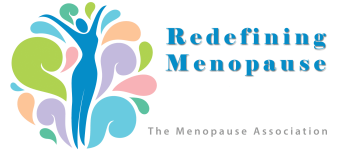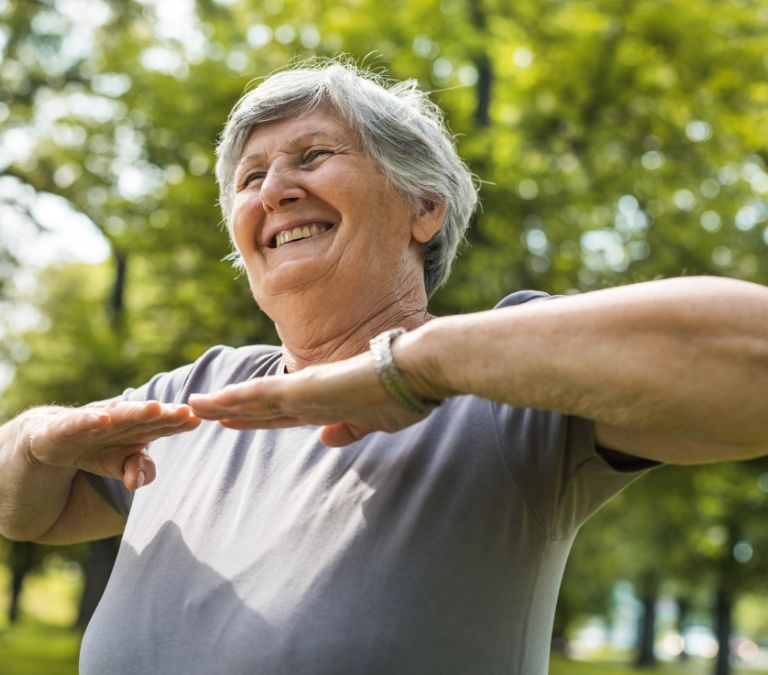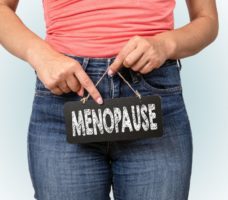In today’s society, it has become straightforward to do nothing. Specific machines and gadgets have made life more accessible, and we often have no reason to stand up and burn those calories. Not only do we have cars, we now have driverless cars; machines are now available to do our laundry, and even adding some extra polish to our shoes can be done automatically.
With the COVID-19 outbreak, staying home and lying down all day is now easier. So many of us run away from exercise; we’d rather binge-watch episodes of a new series than hop on the treadmill and burn some calories. We have become passive and more susceptible to illnesses that may arise from a “boring lifestyle.”
As women, we cannot escape menopause. While the menopausal stage of our lives is most times natural, it can come with a chunk of symptoms like hot flashes, vaginal dryness, and night sweats. These symptoms cannot be cured but can, of course, be managed. So, how can these symptoms be managed? From medications to diet changes to lifestyle changes, one can adopt various ways to cushion the effects of these symptoms on us. In this article, we’ll be talking about lifestyle changes, including the best exercises for menopausal women.
The Effects of Exercises on Hot flashes And our Health In General
The human body is an organized system of cells, tissues, and organs. These components make up the body and are always in a steady state of work to perform their metabolic functions. While these components perform their tasks, keeping the body idle will most likely trigger some severe health problems.
In a nutshell, engaging in exercises or any physical activity will help improve the general condition of our bodies. So, if you want to feel better and make your time on earth long, try engaging in some physical activities.
If you still need some convincing or some emphasis on ways engaging in physical activities can better our system, I have them ready for you. Now let’s look at those ways:
Exercise helps improve mood
According to research, deliberately engaging in physical activity can help relieve stress and lift us emotionally. When we engage in exercises, the brain secretes so many chemicals that are capable of making us feel happier. With this, our general confidence level and our self-esteem can significantly improve.
Exercise promotes better sleep
At times, we often find ourselves finding it challenging to fall asleep. Lucky for us, regular exercises can help us fall asleep faster, deepen our sleep, and even help us get better sleep.
Exercise helps us manage our weight
Exercising can help maintain weight loss and prevent excess weight gain. Exercise is known to help in burning calories.
It helps us combat diseases and health conditions

Diseases of the human body, especially heart diseases, can be prevented by regular exercise. Regular exercise boosts the level of Low-Density Lipoprotein cholesterol in the body. It decreases unhealthy triglycerides and reduces our susceptibility to cardiovascular diseases.
With this, it becomes clear how exercises can be linked to the problems of menopausal symptoms. As women, we are more prone to various issues associated with our reproductive health when compared to men. Most diseases specific to women are caused by changes in the metabolic functions of the reproductive system.
From the moment we are born down to our final breath on earth, we are left with the burden of adjusting to these changes in our reproductive system. Women’s reproductive health is prominent in modern society.
Menopause is divided into three phases; perimenopause, menopause, and postmenopause. During perimenopause, the body gradually shows some signs of declining sexual functions. At this phase, periods become irregular, and some vasomotor symptoms can come mildly or severely.
During the menopause phase, the woman’s period ceases for twelve consecutive months. Immediately after this, the transition into menopause becomes complete, and the perimenopause stage (the final stage) is reached.
On getting to postmenopause, our ovaries become incapable of releasing eggs. At this point, the reproductive functions of our organs become non-existent; it becomes impossible to get pregnant. Many women at this stage tend to experience symptoms specific to menopause.
While signs like hot flashes and night sweats are prevalent among most women going through menopause, other symptoms like heart diseases and ovarian cancer are also reported. Women must find all means necessary to suppress or avoid these illnesses. One way to go about this is through engaging in physical activities like exercises.
Effects of Exercises On the Menopausal Health of Women
As stated earlier, exercise can improve the general health condition of humans. The benefits of engaging in physical activities extend into our menopausal health to cushion the effects of symptoms associated with menopause.
Generally, menopausal women tend to be more vulnerable to rapid weight gain, which is capable of causing heart diseases like palpitated heart and high blood pressure. Women going through menopause are most likely to experience varying degrees of hot flashes.
Some years ago, a few days before Christmas, I had a severe outbreak of vasomotor symptoms, which made me change the lens through which I saw the entire concept of menopause. Before that, I was very ignorant that women living sedentary lifestyles are more likely to experience symptoms of high severity than women with more active lifestyles. I spoke to a doctor, and I was advised to try engaging in more physical activities to reduce the effects of these symptoms on me. These symptoms have decreased since I’ve been entirely committed to my exercises.
Sedentary Women Have More Severe Menopausal Symptoms
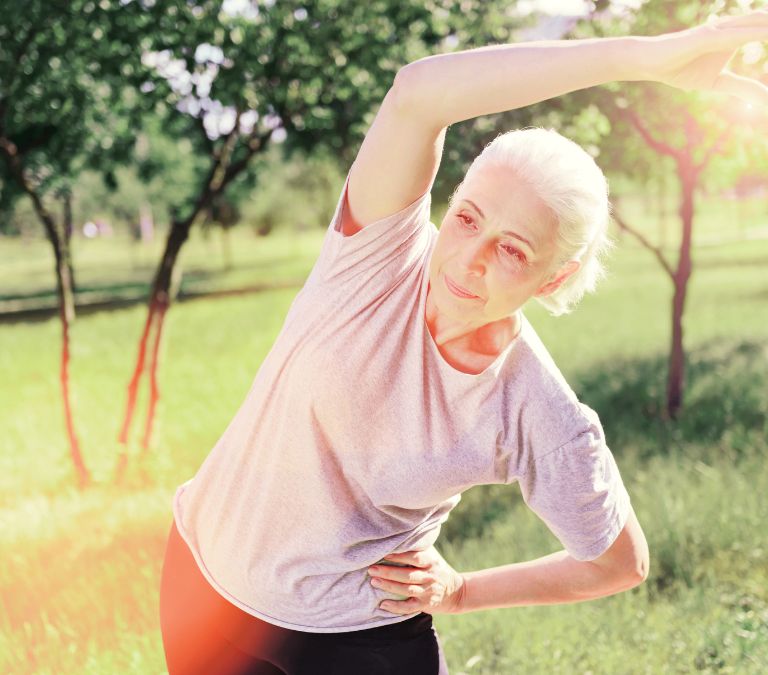
Every woman who wishes to thrive on earth for a long time must undergo menopause. Unfortunately, the stage of menopause comes with it some symptoms that, although mild, can be fatal in some women. But, according to studies, women who do not engage in any form of physical activity will suffer more from these symptoms.
If you are a woman going through menopause and spend most of your day doing nothing, you become susceptible to numerous adverse effects of menopause. For this reason, most women going through menopause today, and are frequent visitors of the hospital, are women who do not engage in physical activities.
I’m not telling you to be an athlete overnight; I’m saying that as women, we should try to embrace the culture of activeness and suppress anything that will make us idle. While this will not be easy, remember that menopause increases your risk of heart problems, and exercises lower the risks.
On getting to postmenopause, the body’s estrogen levels drop, which causes a decrease in the bone density of the skeletal system. The abrupt drop in the story of this hormone increases your risk of osteoporosis, which is the weakening of the bones. Therefore, staying active can help breed healthier bones. Routine exercise makes the bones more robust and resistant to uncomplicated fractures and tears.
And to the most common symptom; is hot flashes. I’m sure you’ve felt that sudden burning sensation throughout the body once or twice since getting to menopause. Hot flashes could be easily ignored or taken for granted when it comes subtly.
However, some women like me have experienced some of the worst hot flashes. During very severe hot flashes, the body releases so much sweat within a short time, and the face can become red, coupled with an abnormally high heart rate. It becomes interesting to know that you could reduce these menopausal effects simply by taking the stairs instead of the elevator.
Exercise Routines Menopausal Women Can Use
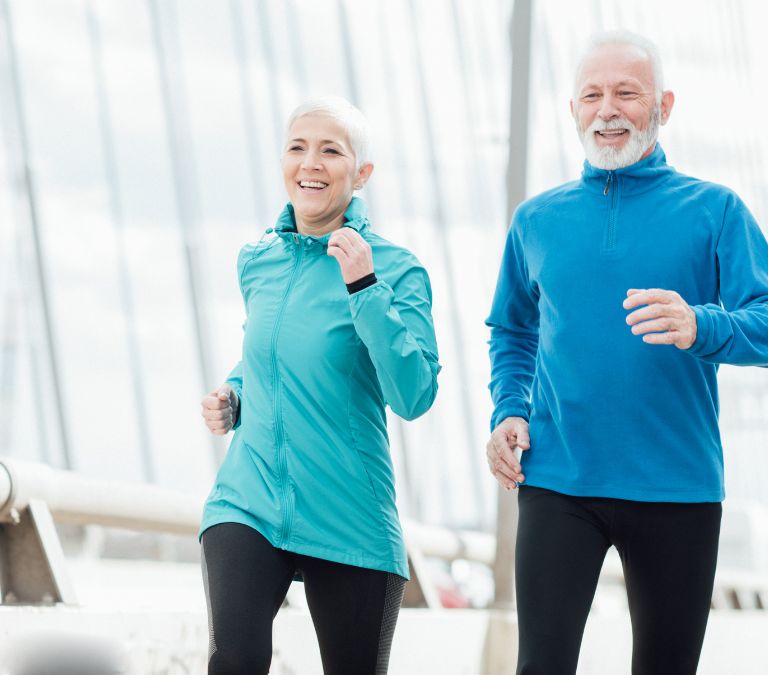
The excellent news about menopausal symptoms is that adopting lifestyle changes can mitigate their effects. While these changes are not potions to cure these symptoms, they can be assumed to cope with the changes in the body.
The effects of these menopausal symptoms can vary from one woman to another. The results of these exercises can also differ from one woman to another. It is why finding the best routine that fits you is essential.
Some of the exercise routines that you can adopt are:
Cardio
These exercises are primarily used to keep the heart in good shape. Owing to the effects menopause can cause on the heart, women tend to need equipment to engage in cardiovascular exercises. As an alternative, women can take part in cardio training in the comfort of their homes.
Some examples of cardio exercises include
Jump rope: This exercise can be used as an alternative to jogging in place and is very effective in training a good heart. To engage in this exercise, you must stand with both feet together, swing the rope over your body, and repeatedly jump up and down at a spot.
Jumping Jacks: Other than the cardiovascular fitness of the heart, this exercise targets major muscle groups and strengthens bones. To perform this exercise, you should begin with both feet apart and arms down. The arms are then raised to the sides while jumping out with the feet apart. You should repeat this process until you feel satisfied with your progress.
Stair Climb: Try taking the stairs, using two feet at a time instead of one. Hoping from one level to another on the staircase will help strengthen your cardiovascular system and leg muscles. With this, try going up and down your stairs for several rounds.
Marching/Jogging in Place: Owing to the simplicity of this routine, you can include this into your workout sessions as a warm-up exercise. You can increase the intensity by increasing the speed.
Single-Leg Stand: Try standing on one foot while brushing your teeth or making a phone call. It will help the abdominal muscles. To increase the intensity, you can lift one leg higher.
Balance and Flexibility
These routines can ensure stability and flexibility as you get older. They can also be used to relax effectively and for meditation.
Some examples of exercises for balance and flexibility include:
Yoga: Other than helping treat physical pain, yoga can be used to reduce the emotional effects of menopause on you. Yoga helps in reducing effects like hot flashes, lack of sleep, and depression. Some routines like shoulder stand, marichi’s pose, head-to-knee forward bend, downward-facing dog, and reclining bound angle pose help deal with menopausal symptoms, scorching flashes, and mood swings.
Tightrope Walk: This exercise will no doubt help work on your stability. It simply involves walking on a thin rope without going off it. I recommend you try this routine out for at least 15 steps.
Heel-toe Walking: involves bringing your hands to your sides, parallel to the floor, and then walking with your heels and toes alternating for both legs. Go as long as 30 steps.
Dancing: Yes! Dancing is a good form of exercise. According to research, dancing can help lower the body’s cholesterol levels and improve fitness. All of these can, in turn, help reduce the effects of hot flashes on you. So, why not stand up and dance to your favorite song’s rhythm rather than sit and tap your foot on the floor? It’ll help you stay fit.
Tai chi: This Chinese martial art can be used as an exercise for menopause. Tai chi can help improve sleep and lower blood pressure. Tai chi means meditating while making slow movements. For example, you can get on both feet while making a circular shape with your hands at a prolonged rate. It will help you concentrate and also deal with the emotional effects of menopause.
Muscle Strengthening
These routines are used to make the muscles stronger and more challenging. Exercises like this usually involve subjecting the bones and muscles to equipment with high weight to strengthen the muscles. Sometimes, menopause can have a detrimental effect on our musculoskeletal health due to osteoporosis. It is why engaging in muscle strengthening exercises is crucial to groom a strong and healthy musculoskeletal system, trigger proper immune system functioning, and burn body fat.
Some muscle strengthening exercises include:
Puss-ups and pull-ups: This routine helps strengthen the muscles of the hand and abdomen. Constant practice of this routine might help reduce the occurrences and the effects of hot flashes in our system. Also, this procedure can be used to burn calories and body fats. Excess fats in the body of a menopausal woman will increase her risk of heart-related problems. It is why this routine is essential.
The simplicity of this routine cannot be overemphasized. You can engage in it in your sitting room or your yard. While doing push-ups, get down on the floor on all fours, with your hands slightly wider than the shoulders. Gradually lower your body until your chest nearly touches the floor; pause, and push yourself back to how you started.
Repeat the procedure until you cannot go any further. On the other hand, pull-ups imply grabbing a firm bar and then pulling yourself towards the bar until your chest gets to the same level as it, and then repeating. These routines are usually draining but are very effective in staying feet, especially during menopause.
Lifting weights: According to research, lifting slightly heavy weights can help postmenopausal women reduce the amount of body fat in them and also increase their muscle mass. You don’t have to register for a gym program or purchase highly complicated weights.
A moderately heavy dumbbell will do the trick. You can try lifting dumbbells repeatedly and adding extra weights when you feel comfortable with the one you’ve been using. Doing this will help you manage the problem of osteoporosis resulting from menopause. This procedure builds your bones and muscles to carry heavier weights, thereby maintaining a healthier musculoskeletal system.
Cycling: You aren’t too old to go cycling. This recreational activity is used to develop healthier hearts and stronger bones. Going two laps from your apartment to the next block will go a long way in helping you manage menopausal problems. While this activity hasn’t been proven to reduce hot flashes, it wouldn’t hurt to try it out. You can start by purchasing or renting a bicycle. So, cycling instead of driving will help your overall well-being stay solid when going for short distances.
These activities will not only help us in our journey through menopause, but they will also help in our journey through life. So, from this moment, try working more and sitting less. Sometimes, opt for the stairs instead of the elevator, cycle to the park instead of driving there, and once in a while, go to your lawn and do some digging. All of these will help you properly manage problems of menopause.
Roles of Relatives During Menopause
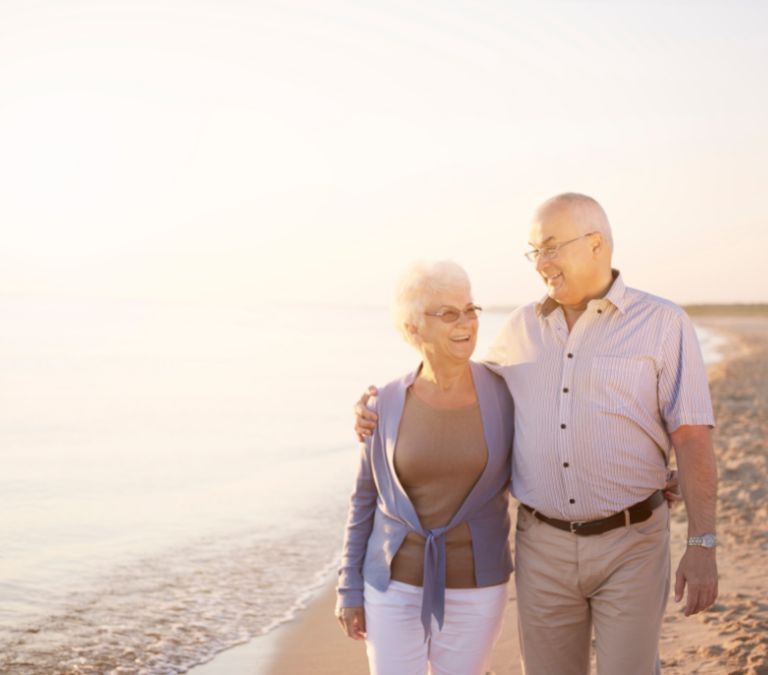
The period of menopause can be challenging, sometimes excruciating. With this, menopausal women often require care from loved ones and relatives. In our society today, just like how it’s always been, couples and people in relationships face challenges.
The menopause period of a woman’s life can be one of those challenges. Sometimes, women going through menopause will partially lose interest in sex. It can be attributed to vaginal dryness in loss of libido. Partners to these women will often find coping with the new changes challenging.
As stated earlier, women at the menopausal stage of their lives are prone to more illnesses like hot flashes, difficulty in sleeping, anxiety, mood swings, and even heart problems. Sometimes, these problems make us demand some level of support or care from our partners. The delicacy of menopause requires utmost care, most often needed from our partners.
Some ways husbands and other relatives can help during menopause include:
- Researching menopause
Making research on what menopause entails
One good way partners can help their wives out during menopause will be to find out about menopause. They are not left in the dark when menopausal conditions come up.
- Encouragement
While women go through physical and emotional problems during menopause, partners have to stay and encourage women no matter what. During times of exhaustion, anxiety, and low confidence, a partner can help brighten a woman’s mood even during the toughest times.
- Helping out with symptoms
When management options are presented, a partner can help by making you go for them. For example, if a woman decides to try out exercises, a partner can help by joining her as a coach. Your partner can help in ensuring healthy sleeping patterns and healthy diet choices.
- Not taking issues personally
Sometimes, mood swings can become annoying to your partner. He may become impatient with you. Nevertheless, it is essential to let your partner know that changes in mood during menopause are in no way deliberate and, as such, be understanding.
Cases of forgetfulness have also been reported in menopausal women. All of these could make your partner feel you’re exaggerating the symptoms. However, your partner shouldn’t take any of it personally, as they are all symptoms associated with menopause.
- Being a sympathetic listener
Most times, women are more comfortable sharing their menopause experiences with their partners than with anyone else. A partner should be a good and sympathetic listener when you raise topics relating to menopause.
People do not tell you about menopause because it gives you a fresh outlook on life. Leaving the pressure associated with reproductive years gives so many women a sense of self-esteem and accomplishment. You tend to focus more on yourself, your relationships, and your goals.
Studies have shown that the feeling of optimism increases when you get to fifty. So, don’t see menopause as the body’s way of communicating retirement, and when the symptoms become overwhelming, remember that engaging in exercises helps improve your physical and mental health. It means you can alleviate menopausal symptoms like fatigue, anxiety, obesity, and poor sleep with exercise.
